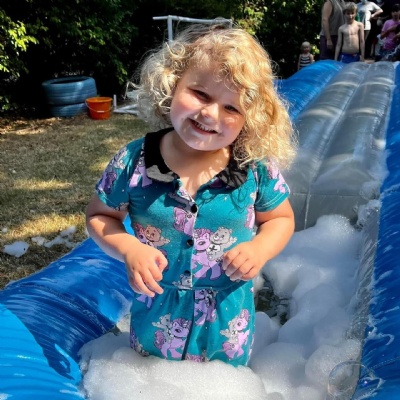Staying cool during hot weather

Why Regulating Body Temperature Matters for Disabled Children
Many disabled children—especially those with neurological conditions, sensory processing challenges, reduced mobility, or complex medical needs—have difficulty regulating their body temperature. They may not sweat effectively, move to warm up or cool down, or communicate how they’re feeling. For these children, temperature regulation isn’t just about comfort—it’s about safety and wellbeing.
Why It Matters -
Risk of Overheating (Hyperthermia): Children who are non-verbal, immobile, or can’t sweat properly may struggle to signal when they’re too hot. This can lead to heatstroke, seizures, or distress.
Risk of Getting Too Cold (Hypothermia): Children with poor circulation, low muscle tone, or who use ventilators can lose heat quickly—especially if they're in wheelchairs or unable to adjust their clothing or bedding.
Temperature Impacts Health: Heat can worsen seizures or fatigue, while cold can increase cramps or pain.
Emotional and Behavioural Effects: Discomfort from being too hot or cold can cause anxiety, dysregulation, or shutdowns—especially when a child can't express what’s wrong.
Practical Tips for Parents & Carers -
Supervision is key: Always supervise your children when they are playing in or around water.
Layer smartly: Use light, breathable layers like cotton that are easy to add or remove.
Check frequently: Feel the back of the neck, underarms, hands, and feet for signs of being too hot or cold.
Adapt equipment: Use cooling vests, thermal blankets, or wheelchair liners depending on the weather.
Use spray bottles: Lightly mist the skin with cans of water spray to cool down gradually. These can be purchased - pressurised cans tend to have finer mist and be colder.
Cool with cloths (safely): Muslin cloths dipped in cool water can be placed on the back of the neck, wrists, feet, or forehead—but avoid the chest, especially if your child has a heart condition.
Seek shade: Stay out of direct sun and make the most of shaded areas or blackout blinds indoors.
Creative Ways to Keep Hydrated -
Try fun fluids: Offer ice lollies, juicy fruits, or cold drinks to encourage hydration.
Make hydration playful: Water play, splashing, and messy play with ice cubes can cool and hydrate at once. Paddling pools can be great, and always seek shade.
Tube-fed children: Speak to your child’s dietitian about safe additional water flushes during hot weather.
Watch for signs: Many children don’t feel thirst in the usual way—don’t wait for them to ask for a drink.
If Your Child Overheats -
If your child becomes too hot, cool them down slowly and gently. Sudden temperature changes—like cold baths or ice packs—can send the body into shock. Gradual cooling with damp cloths, moving to a cooler room, offering sips of water, and reducing layers is safest.
Other Key Considerations -
Skin Care: Use barrier creams and reposition often to prevent pressure sores or rashes, which are more common in extreme temperatures.
Routine Adjustments: If the weather disrupts your usual activities, plan for calming indoor play or earlier outdoor time.
Communication Support: Use AAC, signs, or symbols so your child can let you know if they’re too hot, cold, tired, or unwell.
Emergency Planning: Make sure your child’s care or emergency plan includes strategies for extreme temperatures—especially if they rely on powered medical equipment or temperature-sensitive medication.
Final Thought
Every child is different. But for many disabled children, managing body temperature is not just a matter of comfort—it’s a health priority. Learning their cues, planning ahead, and gently adapting their environment can prevent problems before they start. You’re not being overprotective—you’re being prepared.
